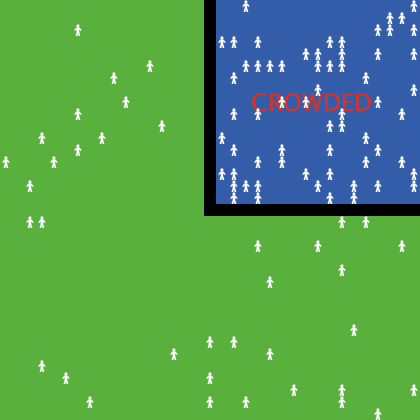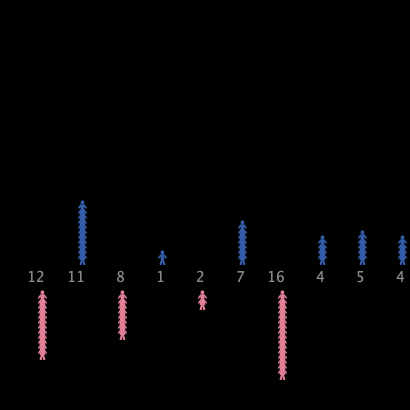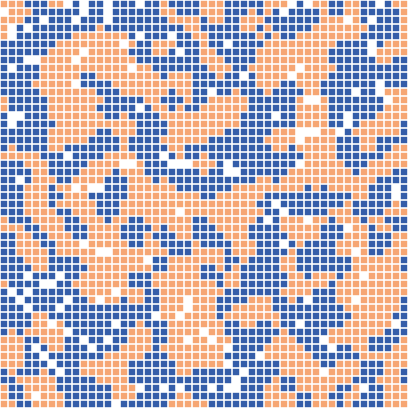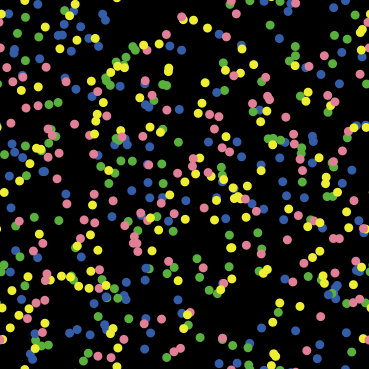turtles-here
turtles-here reports an agentset that contains all the turtles on the same patch with the original turtle, including the original turtle itself. For example, if we wanted to create a contagious disease model where red turtles passed the disease to all the turtles on the same patch, we would write the following code:
ask turtles with [color = red][
ask turtles-here [
set color red
]
]
Things to keep in mind when using turtles-here:
- It is often undesirable to have the original turtle in the agentset that
turtles-herereports. It may even cause errors on rare occasions. For example, the following code would show an errorask turtles [ create-links-with turtles-here ]because the original turtle would try to create a link with itself. In such cases, we can use theotherprimitive. For example, the following code would not show an error:ask turtles [ create-links-with other turtles-here ] - We can always use the
withprimitive to narrow down the agentset that is reported byturtles-here. For example, the following code would only report the red turtles that are on the same patch with the original turtle:turtles-here with [color = red]. - You can also use
turtles-herewith custom breeds by changing the term turtles with the plural name of the breed as<breed>-here. For example:ask goats [ if any? plants-here [ eat ] ].
In the model example below, we have three white patches that represent hospitals and some turtles that represent people. Some of our turtles are green, which indicates that they are healthy, and some are violet/purple, which indicates sickness. We use turtles-here to ask white patches to heal violet people.
Try it Yourself
What's next?
Once you mastered the turtles-here primitive, don't stop there. Check out the resources below to improve your NetLogo skills.



